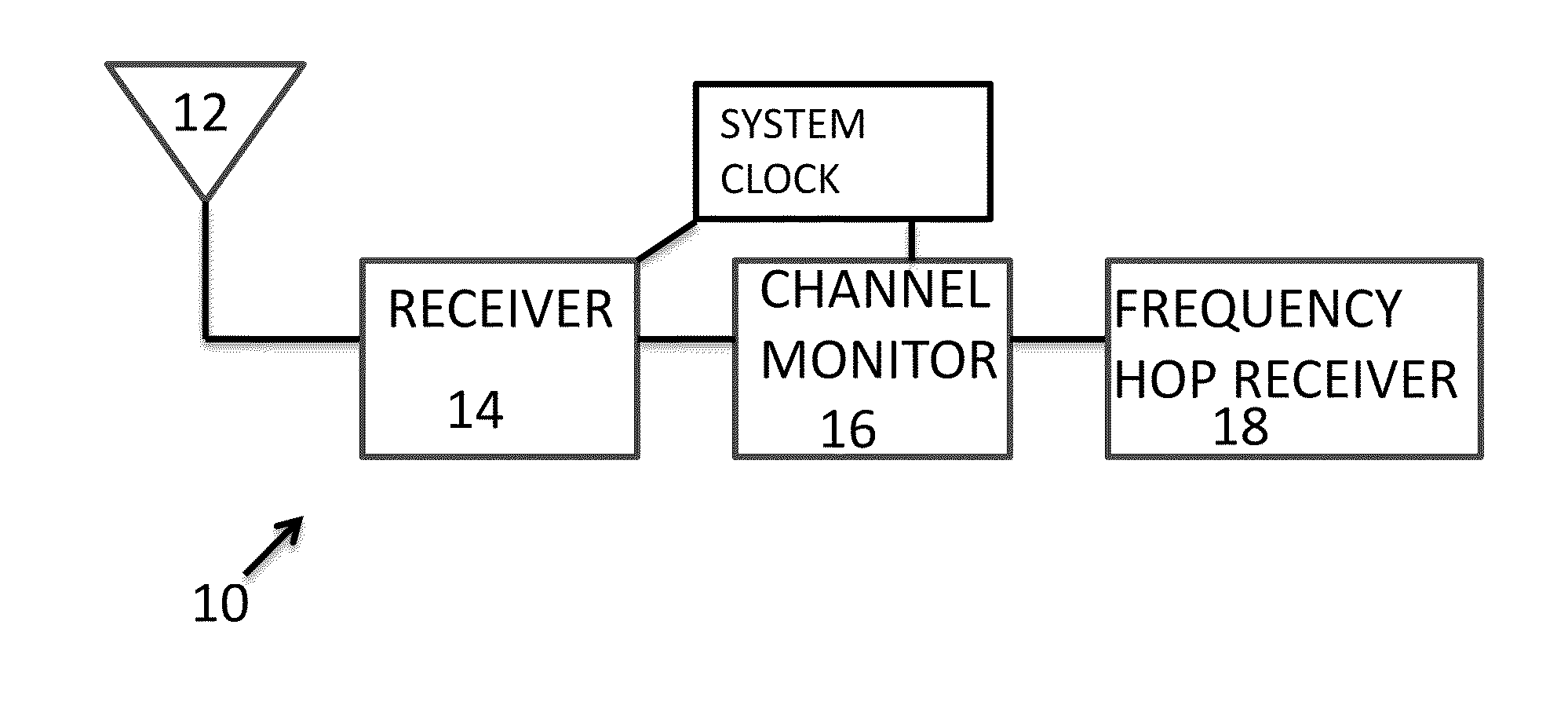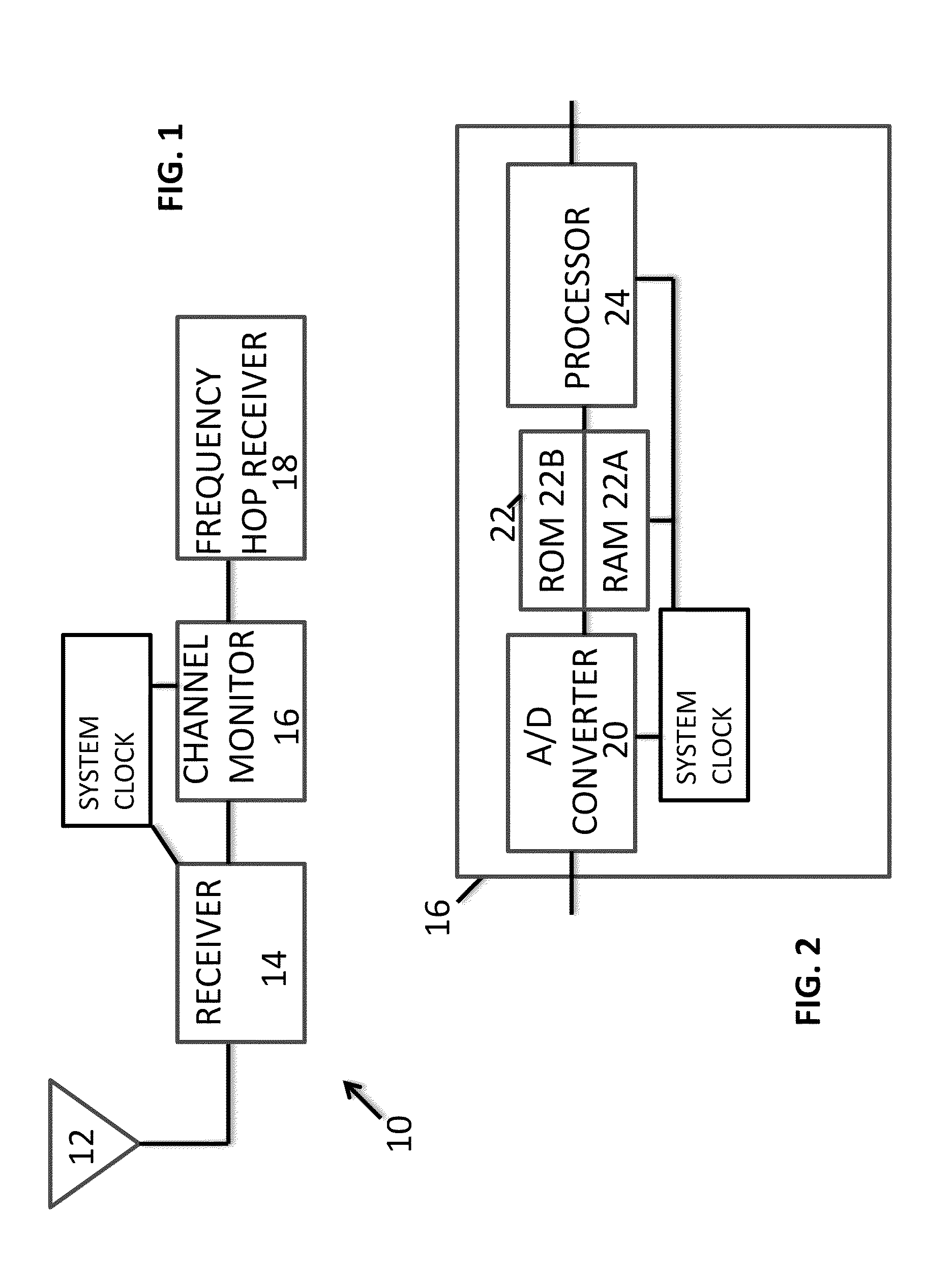Method and apparatus for tracking a frequency-hopped signal
a frequency-hopping signal and frequency-hopping technology, applied in electrical devices, communication jamming, transmission, etc., can solve the problems of difficult detection by an uninformed adversary, limited resolution, and still not very satisfactory, and achieve the effect of easy tailoring
- Summary
- Abstract
- Description
- Claims
- Application Information
AI Technical Summary
Benefits of technology
Problems solved by technology
Method used
Image
Examples
Embodiment Construction
[0027]A preferred embodiment is directed to the problem of tracking a frequency-hopped signal of random dwell frequency and hop timing, when only the average hop rate and spread bandwidth are known to the receiver. A preferred embodiment is particularly useful in intercepting military communications, where, in addition to dwell frequency, hop timing can also be randomly shifted to guard against unauthorized reception and jamming. Additional applications can be found in the context of transmitter-receiver synchronization for frequency-hopping subject to (unintentional) timing jitter, and in cognitive radio where carrier frequency can be switched depending on spectrum occupancy and interference conditions. Starting from a parsimonious stochastic state-space model, custom particle filtering solutions have been developed for the tracking problem at hand, based on systematic design principles. A preferred embodiment heuristic design is disclosed, which turns out to outperform systematic ...
PUM
 Login to View More
Login to View More Abstract
Description
Claims
Application Information
 Login to View More
Login to View More - R&D
- Intellectual Property
- Life Sciences
- Materials
- Tech Scout
- Unparalleled Data Quality
- Higher Quality Content
- 60% Fewer Hallucinations
Browse by: Latest US Patents, China's latest patents, Technical Efficacy Thesaurus, Application Domain, Technology Topic, Popular Technical Reports.
© 2025 PatSnap. All rights reserved.Legal|Privacy policy|Modern Slavery Act Transparency Statement|Sitemap|About US| Contact US: help@patsnap.com



